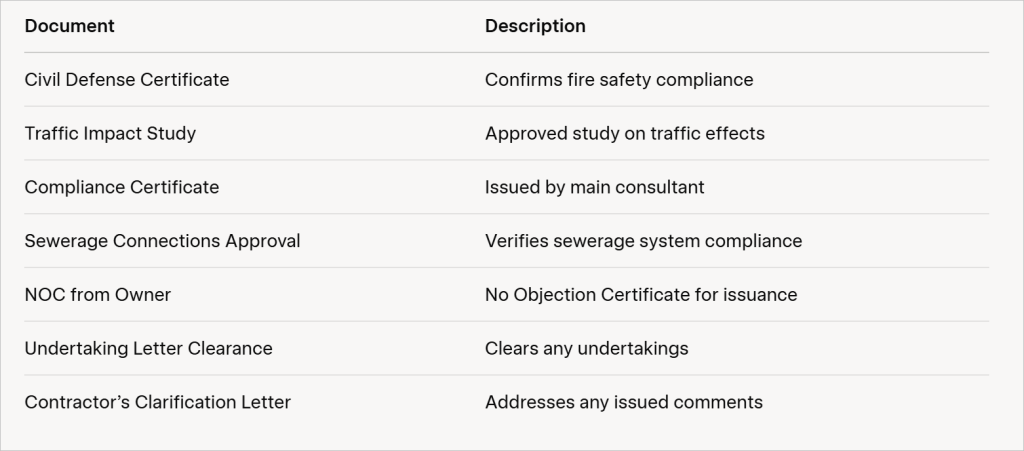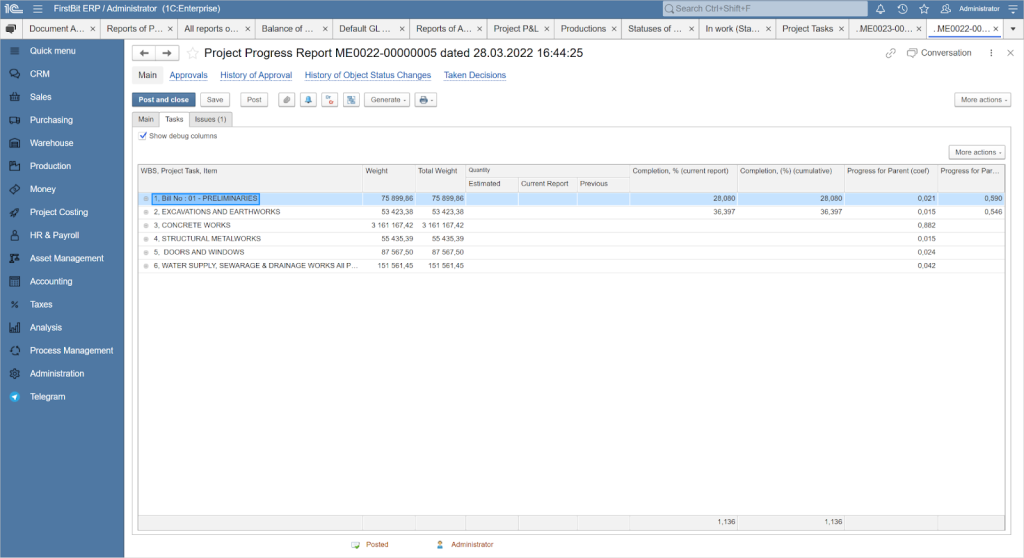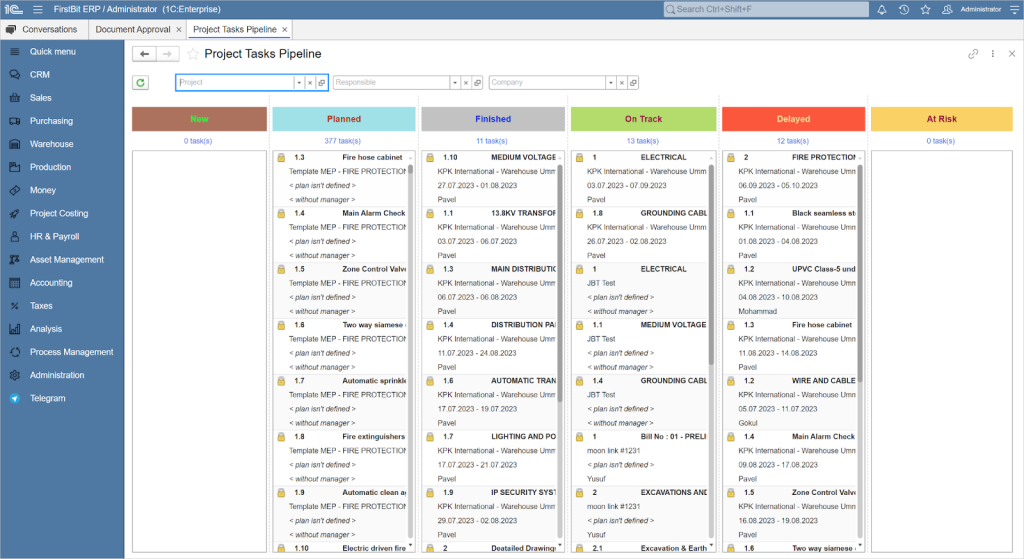In any construction project, milestones mark progress — but none is more significant than the final one: completion. Among the key documents signaling that a project is finished, the Certificate of Completion plays a central role. It formally confirms that the work has been completed in line with contractual obligations and regulatory standards, and often serves as the trigger for final payments, handover, and legal occupancy.
But reaching this point isn’t always straightforward. Without proper handling, this final stage can become a source of delays or disputes between contractors, clients, and authorities.
In this article, we’ll explain what a Certificate of Completion is, why it matters, and what’s required to issue one, so you can navigate the closeout phase with confidence.
What Is a Certificate of Completion in Construction?
A Certificate of Completion in construction is an official document that confirms that construction work on a specific project or a significant part of it (e.g., a stage of work, a section of a building) has been completed in accordance with the terms specified in the contract between the customer and the contractor.
The certificate verifies that:
-
All materials used meet the required standards.
-
Safety systems are in place and operational.
-
All inspections have been successfully passed.
-
Project site is free from major defects or safety hazards.
-
Final payments or financial clearances are either pending or complete.
The term "Certificate of Completion" can be ambiguous. In the UAE, if someone refers to a "Completion Certificate" without further context, they may be referring to the consultant-issued one (similar to a Certificate of Substantial Completion) or the municipality-issued Building Completion Certificate. It's important to clarify which one is being presented to ensure an accurate understanding of the project’s status and requirements.
A Formal Acknowledgment of Work Done Right
It is important to understand that this does not mean that the work is perfect, but rather that it is of sufficient quality and safety for its intended use.
Such documents are usually issued by an architect, engineer, or other authorized representative of the client (or an independent inspector) who supervised the construction process.
The document is issued after the customer (or their representative) has conducted an inspection and verified that the work meets the requirements. Minor defects (the so-called "punch list") may need to be corrected before the certificate is issued.
While general inspections and reports ensure ongoing compliance with standards during construction, the Certificate of Completion is different. Issued at the end of a project phase, this certificate formally declares that the work is substantially complete and meets all contractual obligations. This triggers the warranty period and initiates the process for final payments.
Unlike routine inspections, the Certificate of Completion stands out in its timing, purpose, level of detail, and legal implications.
UAE Specifics of Construction Certificate of Completion
In the UAE, the process often begins with the consultant (the engineer or architect responsible for the project) issuing a Certificate of Substantial Completion.
Additionally, this certificate triggers the release of retention funds.
In a typical construction project, a contractor might have 10% of the total contract value withheld as retention money. The Certificate of Completion triggers the release of the retention portion, ensuring the contractor is fully compensated for their work. The remaining portion is released after the defects liability period has ended, and any outstanding defects have been addressed, and a final Certificate of Completion is issued.[?]
However, for the building to be legally occupied and connected to utilities, a separate Building Completion Certificate is required. This BCC is issued by the relevant local municipality (e.g., Dubai Municipality, Abu Dhabi City Municipality) after their own inspections and verification that the project complies with all approved plans and local building codes. Therefore, the consultant's Certificate of Completion is typically a prerequisite for applying for and obtaining the official Building Completion Certificate from the municipality.
Certificate of Completion vs. Certificate of Occupancy
Сertificate of Occupancy (CO) is a legal document issued by a government authority (like a local building department or municipality). It certifies that a building complies with all applicable building codes, safety regulations, and zoning laws, and is therefore safe and legal for people to occupy and use.
Unlike a Certificate of Occupancy, a Certificate of Completion is a contractual document. It signifies that the contractor has fulfilled their obligations under the construction contract. It’s important to clarify whether they mean the consultant-issued Certificate of Substantial Completion or the municipality-issued BCC.
In any case, you will need the data to generate both certifications in order to start the process. To save time, you can use digital platforms such as FirstBit ERP to provide all the necessary information.
Why This Certificate Matters More Than You Think
The Certificate of Completion is a critical document in construction for several reasons. Below are the key aspects that highlight its importance:
Required for Legal, Insurance, and Sales Purposes
This certification confirms the building meets all approved plans, building codes, and safety regulations. Such compliance is critical for obtaining insurance, as insurers often need proof that safety standards have been met. Moreover, when selling or transferring the property, this document is usually essential. It assures buyers and authorities that the building is legally sound and ready for occupancy.
In the UAE, a Building Completion Certificate (BCC) is mandatory for property registration and sale. Without it, buyers cannot legally take possession of the property.
Signals Risk Transfer and Post-Handover Responsibility
Issuing the Certificate of Completion signals a crucial shift, transferring risk from the contractor to the owner. The owner then becomes responsible for the property, including maintenance and repairs, excluding those falling under the warranty or defect liability period. This handover clearly defines subsequent responsibilities, ensuring mutual understanding of each party's obligations.
After the Certificate of Completion is issued, any defects that arise during the defect liability period (e.g., 12 months) are typically the contractor's responsibility to fix, while general maintenance becomes the owner's duty.
Build a successful business in the UAE
Launch your projects effortlessly with FirstBit ERP
Request a demo
Step-by-Step: How to Obtain a Certificate of Completion
Obtaining a Certificate of Completion involves several key steps to ensure that the construction project meets all contractual and regulatory requirements. Below is a detailed guide:
1. Complete Construction and Internal QA Checks
Before seeking certification, ensure that all construction activities are fully completed as per the contract specifications and approved plans. Conduct thorough internal quality assurance checks to identify any defects or incomplete tasks. Address the "punch list" of minor issues to ensure the project meets the required standards.
2. Request and Undergo External Inspections
Once internal checks are satisfactory, request inspections from the project consultant (typically the engineer or architect of record).
3. Prepare and Submit Required Documentation
Compile all necessary documentation to support the completion of the project. This may include as-built drawings, inspection reports, certificates from subcontractors, material test reports, and compliance certificates from consultants.
In the UAE, specific documents are required for the Building Completion Certificate, such as:
Common Mistakes That Delay Certification
Obtaining a Certificate of Completion can be delayed by several common mistakes. Being aware of these pitfalls can help ensure a smoother certification process.
1. Deviations from Approved Plans
Failure to meet required standards and the subsequent delay in certification can frequently be traced to a critical error: making unauthorized changes to construction plans. It's essential that any deviations from approved plans are instead formally approved via a change order process. Without this proper documentation, such changes will likely mean the project doesn't meet the necessary standards, thus blocking the process of issuing a Certificate of Completion.
2. Missing Inspection Logs or As-Built Drawings
Missing or lacking documentation management, such as inspection logs and as-built drawings, can critically hinder certification, as these records are essential for the certifying authority to verify correct project completion. Therefore, it's important to meticulously log all inspections and ensure that as-built drawings accurately reflect the final constructed state.
3. Misunderstanding Regional Terminology or Process
Confusion and significant delays in the certification process can arise from a basic misunderstanding of specific regional terminology and procedures, such as the separation of documents in the UAE, as mentioned above.
Failing to differentiate between the purpose, issuer, and implications of such varied certifications often leads directly to these avoidable project setbacks.
4. Late or Incomplete Application Submission
A significantly extended certification timeline often stems from critical oversights, such as delaying the submission of the application for the Certificate of Completion or providing it with crucial missing information. These procedural shortcomings can prevent the review process from proceeding efficiently, leading directly to unwanted postponements in achieving project certification.
Using an Enterprise Resource Planning (ERP) system can mitigate these issues by providing a centralised platform for managing documents and tracking deadlines. Notifications ensure that all necessary components are compiled and submitted on time.
Launch your business the smart way
Request a demo
How Digital Platforms Are Changing the Certification Process
Digital tools are changing how construction projects get certified. FirstBit ERP streamlines inspection scheduling, which reduces delays in obtaining the Certificate of Substantial Completion.
Streamlined Documentation
Digital platforms centralize all certification documents, such as project progress reports, inspection reports, and bill of quantities (BOQ).
For example, FirstBit ERP system for construction, used in the UAE, allows contractors to store and share these documents electronically, ensuring quick access for Dubai Municipality reviews and reducing lost paperwork risks.
Enhanced Communication
FirstBit ERP helps everyone involved (managers, consultants, contractors) communicate better. Real-time updates on project task pipelines mean fewer mistakes and delays. If an inspector finds an issue, the contractor can be notified instantly and fix it quickly. This is key for smooth progress towards a Certificate of Substantial Completion or the final BCC.
Every step in the certification process is tracked. This creates a clear audit trail, useful if there are disagreements or to prove all rules were followed. FirstBit ERP can also help meet local requirements, like UAE VAT rules, smoothing the certification path.
Final Thoughts
The Certificate of Completion is more than a box to check at the end of a project—it represents a shift toward accountability and trust in modern construction. As digital tools streamline documentation and verification, the certification process is evolving from a static, paper-heavy formality to a dynamic part of project delivery. This evolution not only speeds up handovers and reduces disputes but also sets a precedent for how quality and transparency are valued in the industry.
In a construction environment defined by tighter deadlines, complex regulations, and growing client expectations, mastering this process signals readiness for the future of project delivery.
Use an ERP compliant with UAE laws
Operate confidently in the UAE regulatory landscape
Request a demo

Anna Fischer
Construction Content Writer

See FirstBit ERP solutions in action
Discover how our system solves the unique challenges of contractors in a personalized demo.
After the demo you will get a quotation for your company.
After the demo you will get a quotation for your company.










